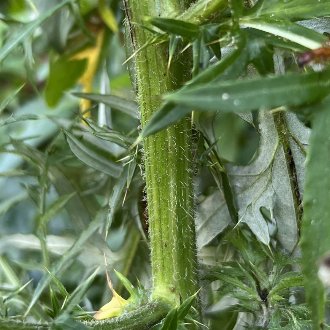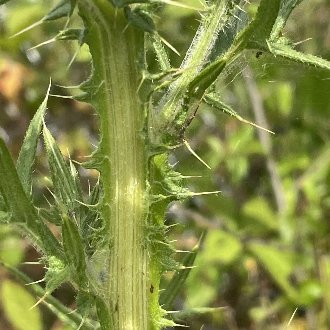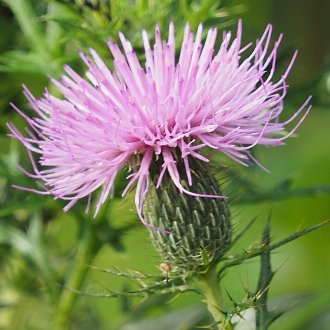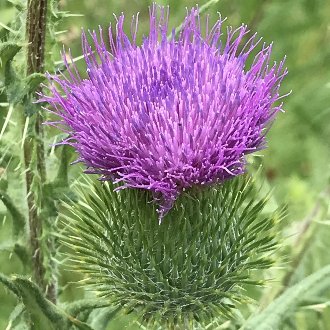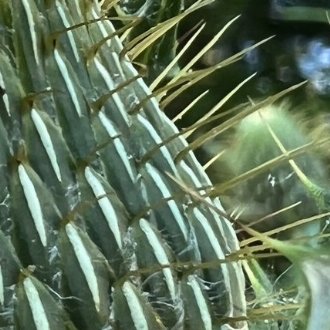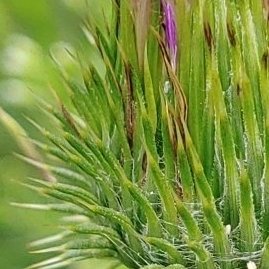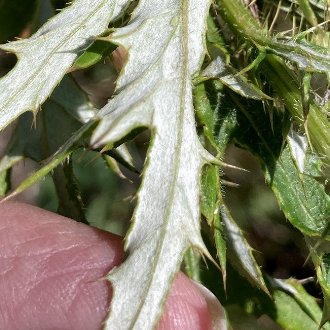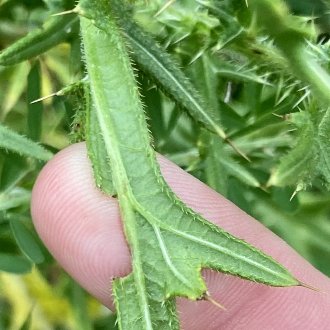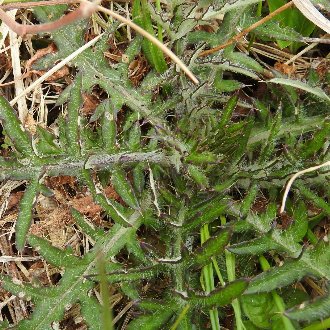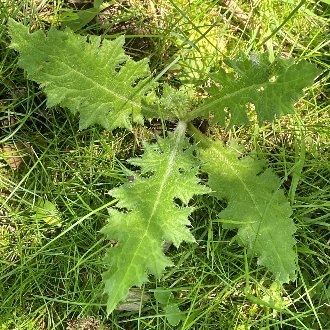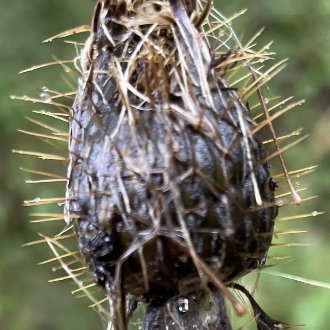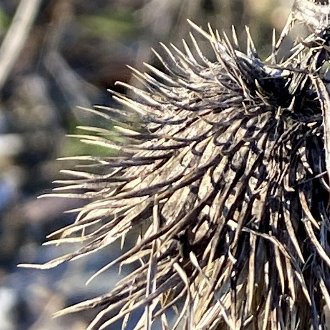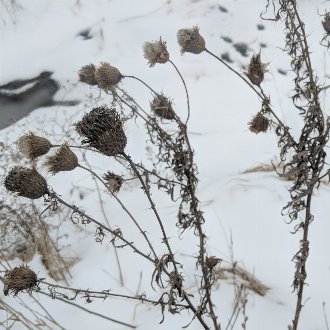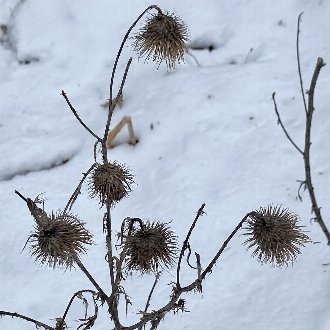Field Thistle vs Bull Thistle
These species are visually similar and are easily confused where their ranges overlap. They are easily distinguished by involucres (cluster of bracts under each flowerhead) and the color of leaf undersides, and also by stems and sometimes by flower color. Cirsium discolor is more restricted to mesic conditions whereas Cirsium vulgare ranges much farther west and north, ranges into both moister and drier sites, and is more tolerant of rocky soils. Both can be found in disturbed habitats but C. discolor also occurs in higher-quality natural areas.
Field Thistle (Cirsium discolor) | Bull Thistle (Cirsium vulgare) |
A biennial to short-lived perennial native to Eastern North America. | A biennial native to Europe and invasive in most of North America. |
Stem is not winged, and is only hairy, not spiny. Photo © jdshide, Public Domain. | Stem is winged, with long leaflike structures proceeding from the base of each leaf blade. Wings of stems are spiny. Photo © Becky, Public Domain. |
Blooms slightly later (late summer into fall.) Flowers average a paler, more washed-out pink color. Flowerhead is usually much broader than the underlying involucre (cluster of bracts). Photo © mefisher, Public Domain. | Blooms slightly earlier (mid-to-late summer.) Flowers average a bolder, more saturated purple color. Flowerhead is similar in size to the underlying involucre, ranging from only slightly wider, to narrower than it. Photo © jeffreyaewick, Public Domain. |
Phyllaries or involucral bracts are dark green, with bold pale stripes down the middle, and are tipped with narrow spines, which bend abruptly and project nearly perpendicularly and proceed straight outward, with a similar outward angle over the whole involucre. Photo © jdshide, Public Domain. | Phyllaries or involucral bracts average a lighter green color, and are not visibly striped. Bracts taper gradually at their tip to a stout-based spine, which curves gradually outward, projecting outward towards the base of the involucre, but pointing forward in the direction of the flower, closer to the flower. Photo © Jim Rusconi, Public Domain. |
Leaves are bright white or very pale underneath, dramatically contrasting with dark green upper surface. Photo © Allen Browne, CC BY 4.0. | Leaves are green underneath, only slightly paler than upper surface. Photo © Emily Summerbell, CC BY 4.0. |
Basal rosettes of young plants always have deeply-cut leaves. Photo © Yann Kemper, Public Domain. | Basal rosettes of young plants may have deeply-lobed leaves, but also may have broad, full leaves with only shallow cuts between lobes. Photo © Sandy Wolkenberg, CC BY 4.0. |
Spines on phyllary tips have an orange-golden color as they dry out, contrasting with the dark background of the phyllaries. Pale stripes on phyllaries usually still visible. Photo © Max Miley, CC BY 4.0. | Dried-out phyllaries rather monochromatic in most cases, usually a consistent dull gray-brown. Photo © Sandy Wolkenberg, CC BY 4.0. |
Seedheads on dead plants usually stay more upright, leaning only slightly, usually with the stem as a whole. Photo © ksandsman, CC BY 4.0. | Dead plants themselves usually have straighter stems, with the stem less likely to lean until right under the seedhead. Although some seedheads may remain upright, many end up drooping like hanging bells, with the curve happening abruptly, just under the seedhead. Photo © Sandy Wolkenberg, CC BY 4.0. |
References & External Resources
These short lists show only links helpful for ID. For a complete list of references and resources also covering other aspects of ecology, visit the links section of the full article on each plant, which is the first entry here.



